Portal maintenance status: (June 2024)
|
The arts
The arts or creative arts are a vast range of human practices of creative expression, storytelling, and cultural participation. The arts encompasses multiple diverse and plural modes of thinking, doing, and being, in an extremely broad range of media. Both dynamic and a characteristically constant feature of human life, they have developed into innovative, stylized, and sometimes intricate forms. This is often achieved through sustained and deliberate study, training, and/or theorizing within a particular tradition, across generations, and even between civilizations. The arts are a vehicle through which human beings cultivate distinct social, cultural, and individual identities while transmitting values, impressions, judgements, ideas, visions, spiritual meanings, patterns of life, and experiences across time and space. (Full article...)
Featured articles - load new batch
-
Image 1

The Annunciation, 76.5 × 54.6 cm (301⁄8 × 211⁄2 in.), Hans Memling, 1480s, oil on panel (transferred to canvas), Metropolitan Museum of Art, New York
The Annunciation is an oil painting by the Early Netherlandish painter Hans Memling. It depicts the Annunciation, the archangel Gabriel's announcement to the Virgin Mary that she would conceive and become the mother of Jesus, described in the Gospel of Luke (Luke 1:26). The painting was executed in the 1480s and was transferred to canvas from its original oak panel sometime after 1928; it is today held in the Robert Lehman collection of the Metropolitan Museum of Art in New York. (Full article...) -
Image 2

The Arch of Remembrance is a First World War memorial designed by Sir Edwin Lutyens and located in Victoria Park, Leicester, in the East Midlands of England. Leicester's industry contributed significantly to the British war effort. A temporary war memorial was erected in 1917, and a committee was formed in 1919 to propose a permanent memorial. The committee resolved to appoint Lutyens as architect and to site the memorial in Victoria Park. Lutyens's first proposal was accepted by the committee but was scaled back and eventually cancelled due to a shortage of funds. The committee then asked Lutyens to design a memorial arch, which he presented to a public meeting in 1923. (Full article...) -
Image 3
Joseph Roland Barbera (/ˈbɑːrbərə/ BAR-bər-ə; Italian: [barˈbɛːra]; March 24, 1911 – December 18, 2006) was an American animator and cartoonist, best known as the co-founder of the animation studio Hanna-Barbera. (Full article...) -
Image 4
John Douglas (11 April 1830 – 23 May 1911) was an English architect who designed over 500 buildings in Cheshire, North Wales, and northwest England, in particular in the estate of Eaton Hall. He was trained in Lancaster and practised throughout his career from an office in Chester. Initially he ran the practice on his own, but from 1884 until two years before his death he worked in partnerships with two of his former assistants. (Full article...) -
Image 5"Lisa the Skeptic" is the eighth episode of the ninth season of the American animated television series The Simpsons. It first aired on Fox in the United States on November 23, 1997. On an archaeological dig with her class, Lisa discovers a skeleton that resembles an angel. All of the townspeople believe that the skeleton actually came from an angel, but skeptical Lisa attempts to persuade them that there must be a rational scientific explanation. The episode's writer, David X. Cohen, developed the idea after visiting the American Museum of Natural History, and decided to loosely parallel themes from the Scopes Monkey Trial. The episode also makes allusions to actual hoaxes, such as the Cardiff Giant. (Full article...)
-
Image 6
Richard Red Skelton (July 18, 1913 – September 17, 1997) was an American entertainer best known for his national radio and television shows between 1937 and 1971, especially as host of the television program The Red Skelton Show. He has stars on the Hollywood Walk of Fame for his work in radio and television, and also appeared in burlesque, vaudeville, films, nightclubs, and casinos, all while he pursued an entirely separate career as an artist. (Full article...) -
Image 7El Señor Presidente (Mister President) is a 1946 novel written in Spanish by Nobel Prize-winning Guatemalan writer and diplomat Miguel Ángel Asturias (1899–1974). A landmark text in Latin American literature, El Señor Presidente explores the nature of political dictatorship and its effects on society. Asturias makes early use of a literary technique now known as magic realism. One of the most notable works of the dictator novel genre, El Señor Presidente developed from an earlier Asturias short story, written to protest social injustice in the aftermath of a devastating earthquake in the author's home town. (Full article...)
-
Image 8True at First Light is a book by American novelist Ernest Hemingway about his 1953–54 East African safari with his fourth wife Mary, released posthumously in his centennial year in 1999. The book received mostly negative or lukewarm reviews from the popular press and sparked a literary controversy regarding how, and whether, an author's work should be reworked and published after his death. Unlike critics in the popular press, Hemingway scholars generally consider True at First Light to be complex and a worthy addition to his canon of later fiction. (Full article...)
-
Image 9

Phantasmagoria is a point-and-click adventure horror video game designed by Roberta Williams for MS-DOS and Microsoft Windows and released by Sierra On-Line on August 24, 1995. It tells the story of Adrienne Delaney (Victoria Morsell), a writer who moves into a remote mansion and finds herself terrorized by supernatural forces. It was made at the peak of popularity for interactive movie games and features live-action actors and footage, both during cinematic scenes and within the three-dimensionally rendered environments of the game itself. It was noted for its violence and sexual content. (Full article...) -
Image 10
Title page of original printed edition
Agrippina (HWV 6) is an opera seria in three acts by George Frideric Handel with a libretto by Cardinal Vincenzo Grimani. Composed for the 1709–10 Venice Carnevale season, the opera tells the story of Agrippina, the mother of Nero, as she plots the downfall of the Roman Emperor Claudius and the installation of her son as emperor. Grimani's libretto, considered one of the best that Handel set, is an "anti-heroic satirical comedy", full of topical political allusions. Some analysts believe that it reflects Grimani's political and diplomatic rivalry with Pope Clement XI. (Full article...) -
Image 11Maxinquaye is the debut album by English rapper and producer Tricky, released on 20 February 1995 by 4th & B'way Records, a subsidiary of Island Records. In the years leading up to the album, Tricky had grown frustrated with his limited role in the musical group Massive Attack and wanted to pursue an independent project. Shortly after, he met with vocalist Martina Topley-Bird, who he felt would offer a wider vision to his music, and signed a solo contract with 4th & B'way in 1993. Tricky recorded Maxinquaye the following year primarily at his home studio in London, with Topley-Bird serving as the album's main vocalist, while Alison Goldfrapp, Ragga and Mark Stewart performed additional vocals. (Full article...)
-
Image 12

Youth on the Prow, and Pleasure at the Helm, 1832, 158.7 by 117.5 cm (62.5 by 46.3 in)
Youth on the Prow, and Pleasure at the Helm (also known as Fair Laughs the Morn and Youth and Pleasure) is an oil painting on canvas by English artist William Etty, first exhibited in 1832. Etty had been planning the painting since 1818–19, and an early version was exhibited in 1822. The piece was inspired by a metaphor in Thomas Gray's poem The Bard in which the apparently bright start to the notorious misrule of Richard II of England was compared to a gilded ship whose occupants are unaware of an approaching storm. Etty chose to illustrate Gray's lines literally, depicting a golden boat filled with and surrounded by nude and near-nude figures. (Full article...) -
Image 13The Next Day is the 25th studio album by the English musician David Bowie. Released in March 2013, it was Bowie's first studio release in ten years, as he had retreated from public view after undergoing a procedure to treat a blocked heart artery in 2004. Co-produced by Bowie and Tony Visconti, the album was recorded in New York City between May 2011 and October 2012. It featured contributions from session musicians, some of whom he had worked with in the past, including Gerry Leonard, Earl Slick, Gail Ann Dorsey, Steve Elson, Sterling Campbell and Zachary Alford. Recording took place in secret; all personnel involved signed non-disclosure agreements. (Full article...)
-
Image 14Burger's Daughter is a political and historical novel by the South African Nobel Prize in Literature-winner Nadine Gordimer, first published in the United Kingdom in June 1979 by Jonathan Cape. The book was expected to be banned in South Africa, and a month after publication in London the import and sale of the book in South Africa was prohibited by the Publications Control Board. Three months later, the Publications Appeal Board overturned the banning and the restrictions were lifted. (Full article...)
-
Image 15Blue's Clues is an American live-action/animated interactive educational children's television series created by Traci Paige Johnson, Todd Kessler, and Angela C. Santomero. It premiered on Nickelodeon's Nick Jr. block on September 8, 1996, and concluded its run on August 6, 2006, with a total of six seasons and 143 episodes. The original host of the show was Steve Burns, who left in 2002 and was replaced by Donovan Patton (as "Joe") for the fifth and sixth seasons. The show follows an animated blue-spotted dog named Blue as she leaves a trail of clues/paw prints for the host and the viewers to figure out her plans for the day. (Full article...)
Featured pictures
-
Image 1Sunrise, Inverness Copse, at and by Paul Nash (from Wikipedia:Featured pictures/Artwork/Others)
-
Image 2Weeki Wachee spring, Florida at Weeki Wachee Springs, by Toni Frissell (restored by Trialsanderrors) (from Wikipedia:Featured pictures/Artwork/Others)
-
Image 4Crochet table-cloth, by Alvesgaspar/Júlia Figueiredo (from Wikipedia:Featured pictures/Artwork/Others)
-
Image 5Stained-glass example of chromostereopsis, unknown author (from Wikipedia:Featured pictures/Artwork/Others)
-
Image 6Segment of the Surrogate's Courthouse mosaic, by Rhododendrites (from Wikipedia:Featured pictures/Artwork/Others)
-
Image 7Autochrome nude study, by Arnold Genthe (edited by Chick Bowen) (from Wikipedia:Featured pictures/Artwork/Others)
-
Image 8Vanity Fair cover art, by Ethel McClellan Plummer (edited by Durova) (from Wikipedia:Featured pictures/Artwork/Others)
-
Image 9Robbins medallion of Apollo 12, by the Robbins Company (from Wikipedia:Featured pictures/Artwork/Others)
-
Image 10The Adoration of the Shepherds at History of Christianity in Ukraine, unknown author (from Wikipedia:Featured pictures/Artwork/Others)
-
Image 11Saturday Morning Breakfast Cereal panel, by Zach Weinersmith (from Wikipedia:Featured pictures/Artwork/Others)
-
Image 12Cabiria poster, by N. Morgello (edited by Jujutacular) (from Wikipedia:Featured pictures/Artwork/Others)
-
Image 13The King of Brobdingnag and Gulliver at Gulliver's Travels, by James Gillray (restored by Crisco 1492) (from Wikipedia:Featured pictures/Artwork/Others)
-
Image 14Poster for the United States National Park Service at Federal Art Project, by Frank S. Nicholson (edited by Durova) (from Wikipedia:Featured pictures/Artwork/Others)
-
Image 15Love or Duty at Chromolithography, by Gabriele Castagnola (restored by Adam Cuerden) (from Wikipedia:Featured pictures/Artwork/Others)
-
Image 16The Lady with the Lamp at Florence Nightingale, by Henrietta Rae and Cassell & Co (from Wikipedia:Featured pictures/Artwork/Others)
-
Image 17Grant of Arms at Spanish heraldry, unknown author (edited by Durova) (from Wikipedia:Featured pictures/Artwork/Others)
-
Image 18Pond in a Garden at Tomb of Nebamun, unknown author (edited by Yann) (from Wikipedia:Featured pictures/Artwork/Others)
-
Image 19Gin Lane at Gin Craze, by Samuel Davenport after William Hogarth (from Wikipedia:Featured pictures/Artwork/Others)
-
Image 20Fliteline medallion of Gemini 10, by Fliteline (from Wikipedia:Featured pictures/Artwork/Others)
-
Image 21Ayyavazhi emblem at Ayya Vaikundar, by Vaikunda Raja (from Wikipedia:Featured pictures/Artwork/Others)
-
Image 22Dali Atomicus at Salvador Dalí, by Philippe Halsman (edited by Trialsanderrors) (from Wikipedia:Featured pictures/Artwork/Others)
-
Image 23Fantascope at Phenakistiscope, by Thomas Mann Baynes (animated by Basile Morin) (from Wikipedia:Featured pictures/Artwork/Others)
-
Image 26Robbins medallion of Apollo 8, by the Robbins Company (from Wikipedia:Featured pictures/Artwork/Others)
-
Image 27Isle of Graia Gulf of Akabah Arabia Petraea at Caravan (travellers), by David Roberts and Louis Haghe (edited by Durova) (from Wikipedia:Featured pictures/Artwork/Others)
-
Image 28Fliteline medallion of Gemini 7, by Fliteline (from Wikipedia:Featured pictures/Artwork/Others)
-
Image 29scene from the Little Lord Fauntleroy, by Elco. Corp. (edited by Durova) (from Wikipedia:Featured pictures/Artwork/Others)
-
Image 31Robbins medallion of Apollo 11, by the Robbins Company (from Wikipedia:Featured pictures/Artwork/Others)
-
Image 32Crown of the Andes, by the Metropolitan Museum of Art (from Wikipedia:Featured pictures/Artwork/Others)
-
Image 33Fliteline medallion of Gemini 3, by Fliteline (from Wikipedia:Featured pictures/Artwork/Others)
-
Image 34Magna Carta (An Embroidery), by Cornelia Parker (edited by Bammesk) (from Wikipedia:Featured pictures/Artwork/Others)
-
Image 35Gothic plate armour, by Anton Sorg (edited by Durova) (from Wikipedia:Featured pictures/Artwork/Others)
-
Image 38The battle of Mazandaran at Mazandaran province, unknown author (from Wikipedia:Featured pictures/Artwork/Others)
-
Image 39Costume designed by David for legislators, at and by Jacques-Louis David and Vivant Denon (edited by Mvuijlst) (from Wikipedia:Featured pictures/Artwork/Others)
-
Image 40Paper cutout featuring the Lord's Prayer, at and by Martha Ann Honeywell (from Wikipedia:Featured pictures/Artwork/Others)
-
Image 41"When We All Believe", at and by Rose O'Neill (from Wikipedia:Featured pictures/Artwork/Others)
-
Image 42Robbins medallion of Apollo 16, by the Robbins Company (from Wikipedia:Featured pictures/Artwork/Others)
-
Image 43First page of Codex Mendoza, unknown author (from Wikipedia:Featured pictures/Artwork/Others)
-
Image 45Fliteline medallion of Gemini 6A, by Fliteline (from Wikipedia:Featured pictures/Artwork/Others)
-
Image 46Robbins medallion of Apollo 17, by the Robbins Company (from Wikipedia:Featured pictures/Artwork/Others)
-
Image 47Idi Amin caricature, by Edmund S. Valtman (edited by Durova) (from Wikipedia:Featured pictures/Artwork/Others)
-
Image 48Coca-Cola advertising poster, unknown author (edited by Victorrocha) (from Wikipedia:Featured pictures/Artwork/Others)
-
Image 49The Pig Faced Lady of Manchester Square and the Spanish Mule of Madrid, at Pig-faced women, by George Cruikshank (from Wikipedia:Featured pictures/Artwork/Others)
-
Image 51Fliteline medallion of Gemini 12, by Fliteline (from Wikipedia:Featured pictures/Artwork/Others)
-
Image 54Alchemist's Laboratory at Heinrich Khunrath, by Hans Vredeman de Vries (from Wikipedia:Featured pictures/Artwork/Others)
-
Image 57Zaandam at Etching revival, by James Abbott McNeill Whistler (edited by Durova) (from Wikipedia:Featured pictures/Artwork/Others)
-
Image 58Mirror writing, by Mahmoud Ibrahim (edited by Durova) (from Wikipedia:Featured pictures/Artwork/Others)
-
Image 59Fliteline medallion of Gemini 5, by Fliteline (from Wikipedia:Featured pictures/Artwork/Others)
-
Image 60Rosette Bearing the Names and Titles of Shah Jahan, unknown author (from Wikipedia:Featured pictures/Artwork/Others)
-
Image 61Ornamental latin alphabet at Initial, by F. Delamotte (restored and vectorized by JovanCormac) (from Wikipedia:Featured pictures/Artwork/Others)
-
Image 63Pepper No. 30, by Edward Weston (edited by Bammesk) (from Wikipedia:Featured pictures/Artwork/Others)
-
Image 64Robbins medallion of Apollo 9, by the Robbins Company (from Wikipedia:Featured pictures/Artwork/Others)
-
Image 65Beer Street at Beer Street and Gin Lane, by Samuel Davenport after William Hogarth (from Wikipedia:Featured pictures/Artwork/Others)
-
Image 66Robbins medallion of Apollo 7, by the Robbins Company (from Wikipedia:Featured pictures/Artwork/Others)
-
Image 69Christmas angel at Gloria in excelsis Deo, by J. R. Clayton and The Brothers Dalziel (from Wikipedia:Featured pictures/Artwork/Others)
-
Image 70The Thin Red Line at Remembrance poppy, by Harold H. Piffard (restored by Adam Cuerden) (from Wikipedia:Featured pictures/Artwork/Others)
-
Image 71Ijazah, by 'Ali Ra'if Efendi (edited by Durova) (from Wikipedia:Featured pictures/Artwork/Others)
-
Image 721910 cover of Life, by Coles Phillips (edited by Durova) (from Wikipedia:Featured pictures/Artwork/Others)
-
Image 73H.M.S. Pinafore poster, by Vic Arnold (edited by Adam Cuerden) (from Wikipedia:Featured pictures/Artwork/Others)
-
Image 75Madonna and child at Chiaroscuro], by Bartolomeo Coriolano (edited by Durova) (from Wikipedia:Featured pictures/Artwork/Others)
-
Image 76Robbins medallion of Apollo 14, by the Robbins Company (from Wikipedia:Featured pictures/Artwork/Others)
-
Image 78Celadon kettle, by the National Museum of Korea (edited by Crisco 1492) (from Wikipedia:Featured pictures/Artwork/Others)
-
Image 80The Miraculous Sacrement at Jean-Baptiste Capronnier, by Alvesgaspar (from Wikipedia:Featured pictures/Artwork/Others)
-
Image 81Fliteline medallion of Gemini 4, by Fliteline (from Wikipedia:Featured pictures/Artwork/Others)
-
Image 82Computer generated still life, by Gilles Tran (re-rendered by Deadcode) (from Wikipedia:Featured pictures/Artwork/Others)
-
Image 83Fliteline medallion of Gemini 11, by Fliteline (from Wikipedia:Featured pictures/Artwork/Others)
-
Image 84Robbins medallion of Apollo 15, by the Robbins Company (from Wikipedia:Featured pictures/Artwork/Others)
-
Image 85A Brush for the Lead at Sleigh Ride, by Thomas Worth (edited by Durova) (from Wikipedia:Featured pictures/Artwork/Others)
-
Image 87"Wikipedian Protester" at xkcd, by Randall Munroe (from Wikipedia:Featured pictures/Artwork/Others)
-
Image 91The Onion Field, at and by George Davison (restored by Adam Cuerden) (from Wikipedia:Featured pictures/Artwork/Others)
-
Image 92Terragen scene at Scenery generator, by Fir0002 (from Wikipedia:Featured pictures/Artwork/Others)
-
Image 93Robbins medallion of Apollo 10, by the Robbins Company (from Wikipedia:Featured pictures/Artwork/Others)
-
Image 94The Pirate Publisher—An International Burlesque that has the Longest Run on Record at The Pirates of Penzance, by Joseph Keppler (restored by Adam Cuerden) (from Wikipedia:Featured pictures/Artwork/Others)
-
Image 95Taos Pueblo, by Ansel Adams (edited by Kaldari) (from Wikipedia:Featured pictures/Artwork/Others)
-
Image 96Joseph and Potiphar's Wife, by Rembrandt (edited by Crisco 1492) (from Wikipedia:Featured pictures/Artwork/Others)
-
Image 97Your Motherland Will Never Forget, at and by Joseph Simpson (restored by Adam Cuerden) (from Wikipedia:Featured pictures/Artwork/Others)
-
Image 98The Custer Fight at Lithography, by Charles Marion Russell (restored by Adam Cuerden) (from Wikipedia:Featured pictures/Artwork/Others)
-
Image 99Fliteline medallion of Gemini 8, by Fliteline (from Wikipedia:Featured pictures/Artwork/Others)
-
Image 101Nude study at Figurative art, by Kenyon Cox (edited by Durova) (from Wikipedia:Featured pictures/Artwork/Others)
-
Image 102Robbins medallion of Apollo 13, by the Robbins Company (from Wikipedia:Featured pictures/Artwork/Others)
-
Image 103Golden earrings from Gyeongju, by the National Museum of Korea (from Wikipedia:Featured pictures/Artwork/Others)
-
Image 105Stucco relief drawing at Maya civilization, by Ricardo Almendáriz (edited by Durova) (from Wikipedia:Featured pictures/Artwork/Others)
-
Image 106Robbins medallion of Apollo–Soyuz, by the Robbins Company (from Wikipedia:Featured pictures/Artwork/Others)
-
Image 108The Tiburtine Sibyl and the Emperor Augustus, by Antonio da Trento (restored by Adam Cuerden) (from Wikipedia:Featured pictures/Artwork/Others)
-
Image 109Doorway from Moutiers-Saint-Jean, by the Metropolitan Museum of Art (from Wikipedia:Featured pictures/Artwork/Others)
-
Image 111Fliteline medallion of Gemini 9A, by Fliteline (from Wikipedia:Featured pictures/Artwork/Others)
-
Image 112Tilework on the Dome of the Rock, by Godot13 (from Wikipedia:Featured pictures/Artwork/Others)
Vital articles
A museum is an institution dedicated to displaying and/or preserving culturally or scientifically significant objects. Many museums have exhibitions of these objects on public display, and some have private collections that are used by researchers and specialists. Compared to a library, a museum hosts a much wider range of objects and usually focus around a specific theme such as the arts, science, natural history, local history, and other topics. Public museums that host exhibitions and interactive demonstrations are often considered to be tourist attractions, and many museums attract large numbers of visitors from outside their host country, with the most visited museums in the world regularly attracting millions of visitors annually. (Full article...)
Categories
Get involved
- Check the recent changes page for improvements, other changes, and vandalism to these articles
- Article requests: Requests articles (arts and entertainment)
- Deletion discussions: Listed at Wikipedia:WikiProject Deletion sorting/Arts
- Expand: check Visual arts stubs to expand
- Notability: Articles with notability concerns, listed at WikiProject Notability
- Requested pictures: Arts topics, requested pictures





















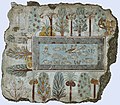




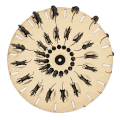















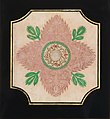













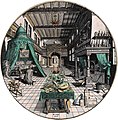

















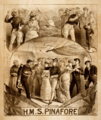

![Image 75Madonna and child at Chiaroscuro], by Bartolomeo Coriolano (edited by Durova) (from Wikipedia:Featured pictures/Artwork/Others)](https://upload.wikimedia.org/wikipedia/commons/thumb/4/49/Mary_Coriolano2.jpg/91px-Mary_Coriolano2.jpg)

















































